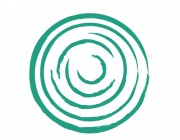Citation:
Abstract:
Cyanobacteria of the genus Synechococcus play a key role as primary producers and drivers of the global carbon cycle in temperate and tropical oceans. Synechococcus use phycobilisomes as photosynthetic light-harvesting antennas. These contain phycoerythrin, a pigment-protein complex specialized for absorption of blue light, which penetrates deep into open ocean water. As light declines with depth, Synechococcus photo-acclimate by increasing both the density of photosynthetic membranes and the size of the phycobilisomes. This is achieved with the addition of phycoerythrin units, as demonstrated in laboratory studies. In this study, we probed Synechococcus populations in an oligotrophic water column habitat at increasing depths. We observed morphological changes and indications for an increase in phycobilin content with increasing depth, in summer stratified Synechococcus populations. Such an increase in antenna size is expected to come at the expense of decreased energy transfer efficiency through the antenna, since energy has a longer distance to travel. However, using fluorescence lifetime depth profile measurement approach, which is applied here for the first time, we found that light-harvesting quantum efficiency increased with depth in stratified water column. Calculated phycobilisome fluorescence quantum yields were 3.5% at 70 m and 0.7% at 130 m. Under these conditions, where heat dissipation is expected to be constant, lower fluorescence yields correspond to higher photochemical yields. During winter-mixing conditions, Synechococcus present an intermediate state of light harvesting, suggesting an acclimation of cells to the average light regime through the mixing depth (quantum yield of ~2%). Given this photo-acclimation strategy, the primary productivity attributed to marine Synechococcus should be reconsidered.

